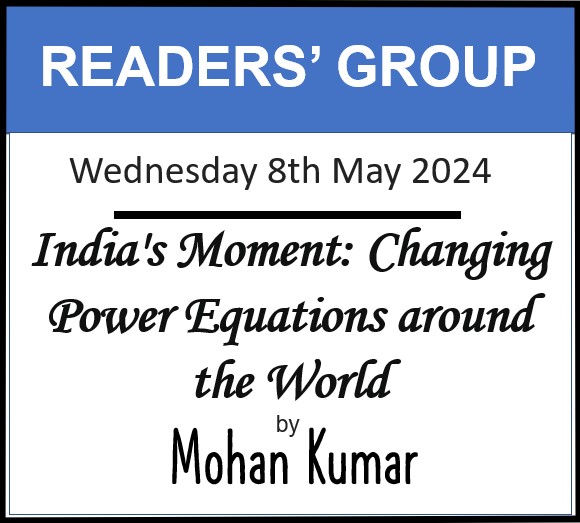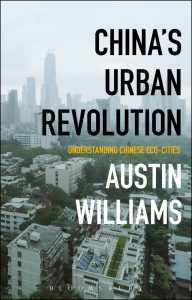Collapse
‘Collapse: How Societies Choose to Fail or Survive’ by Jared Diamond; Allan Lane, 2005. 590pp
Reviewed by Peter Smith | 9 November 2005
With Collapse, Jared Diamond has essentially written two books. Firstly, a series of four case studies examining ancient societies that subsequently collapsed; the East Islanders, the Anasazi in the south west US, the Maya in the Yucatan which forms part of Mexico today and the Norse in Greenland.
Through detailed investigation and research, Diamond demonstrates that each collapse was a result of particular forms of environmental devastation brought about by factors such as soil degradation, over-hunting, over-fishing, habitat destruction, etc. The relative importance of these factors varies from society to society. Diamond’s background as a geographer and biologist enable detailed insights and an understanding of the interchange between certain historical societies and their particular localised environment. Whilst specialists in these areas may find much to debate or argue over, for the lay reader, Diamond’s studies are fascinating.
Interesting as these descriptions and historical investigations are however, it is important to remember that Diamond is describing what were primitive societies. The examples Diamond discusses were isolated and simple agrarian societies, unable to plan adequately for the future, account for changes in the weather or climate and unable to learn from previous mistakes. Even at their most advanced, such societies were pedestrian with little development potential or ability to overcome natural or man made problems.
The second book within this book is relevant to more contemporary debates. For Diamond the historical examples sited in the early sections of the book provide warnings for how society should be organised today. On the face of it, Collapse outlines a fairly standard set of environmental concerns that the reader will be familiar with. How, for example, are we to reconcile the potential aspiration in the Third World for First World standards of living? Or, is rapidly developing China a population time bomb waiting to explode?
How you view these discussions will depend on your broader attitude towards green arguments. Environmentalists will find much detailed analysis to back up their arguments. For those sceptical of the environmental approach, many of Diamond’s particular examples pose challenges. For example, it is difficult to argue that pollution in China is not a problem to be addressed.
Yet this is the central weakness of Collapse reflected in the broader green critique. Where Diamond identifies resource limits and insurmountable ecological crisis, those sceptical of the environmental approach see challenges that mankind has the ability to meet. For Diamond contemporary environmental problems show parallels with the collapse of historical societies, yet surely we should situate such problems in today’s specific historical context. Where Diamond warns against “excessive” development, for many in the developing world it is precisely the lack of development that leaves them poor and hungry.
Ultimately the central question is how to view nature and society. Is society bound to nature, with economic development at odds with a fixed view of the environment, or, is human activity and economic growth central to our advancement?
What makes Diamond’s contribution somewhat different from other green writings, however, is the upfront restatement of Malthusian arguments for today. Malthus worried in 1798 that population inevitably grew faster than food supply and that societies’ collapse was soon to follow. When industrialisation in Britain rapidly increased food production, Malthus’ argument was found wanting.
Overpopulation arguments have invariably raised their head in slightly different forms many time since, however, the argument that ‘there’s far too many black babies’ has tended to be overtaken in recent years with providing people in the developing world with “reproductive choice” (although fertility treatment is never an option offered by NGOs).
Yet for Diamond, such politically correct packaging isn’t a barrier to his more explicit Malthusian tendencies, as he praises the Chinese state for its draconian one-child-per-couple policy. In a way, this, at least demonstrates a degree of honesty, yet Diamond’s Malthusian view leads to some frankly unsavoury arguments.
When discussing of the conflict in Rwanda in 1994, Diamond quotes a study that argues, “…It is not rare, even today, to hear Rwandans argue that a war is necessary to wipe out an excess of population and to bring numbers into line with the available land resources” (p. 326). Given his description of visiting Africa and the sea of children that he encounters, it is difficult to avoid the conclusion that Diamond just didn’t have the guts to argue this himself and has chosen to hide behind the quote.
Whilst the reader may agree or disagree with Diamond’s environmental approach, the main methodological failing of Collapse is to use historical examples to read history backwards through 21st Century concerns. If there is an insight from analysing the collapse of ancient societies, it is that the closer to nature societies are, the more vulnerable those societies are to a range of dangers from crop failure to the weather or simply bad agricultural practice. In short, it is economic development, surely, that rids us of hunger and disease.
Of course, development is rarely without difficulties or problems, the central concern is to learn from this rather than question development per se. To use Diamond’s example of pollution in China: do we deal with the issues as and when it arises, or, do we call Chinese economic development itself into question?
For economic development that brings real benefit and opportunity to people, we should take the first approach; unfortunately it is precisely this approach that Collapse has set out to question.
Collapse is important, not only in and of itself, but because of how widely received it has been both among a general readership and in business circles. According to The Economist, Diamond is currently the third best selling science book on Amazon worldwide and destined to be a best seller when it comes out in paperback (The Economist, April 2 2005, p. 83).
Despite Diamond’s assessment of the modern world and the future dangers he identifies, he claims to be an optimist. One way to assess this claim could be to establish what Diamond is practically arguing for and who benefits from his approach. Here it is difficult to see how environmental arguments that underestimate societies’ ability to adapt to circumstances together with a rebranded Malthusian approach holds anything positive for today.






